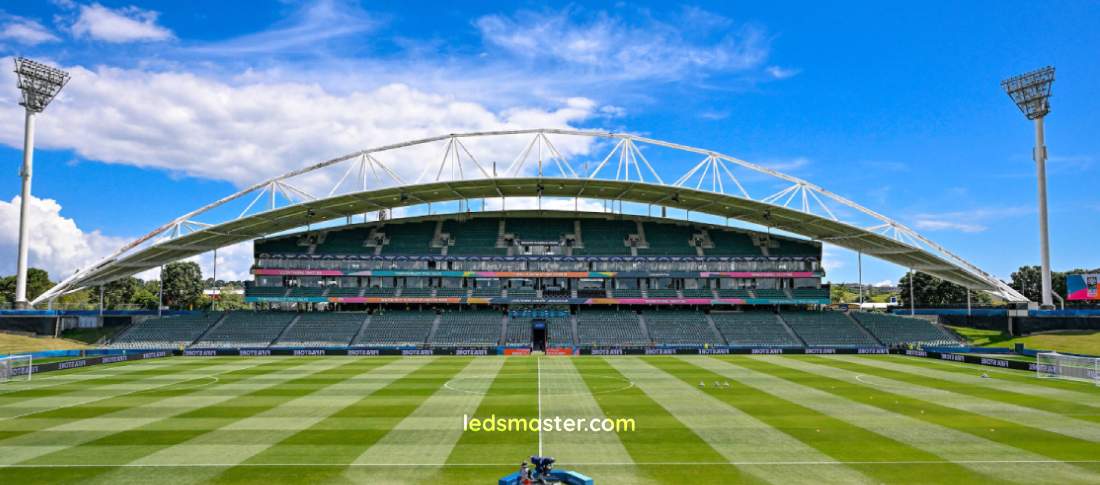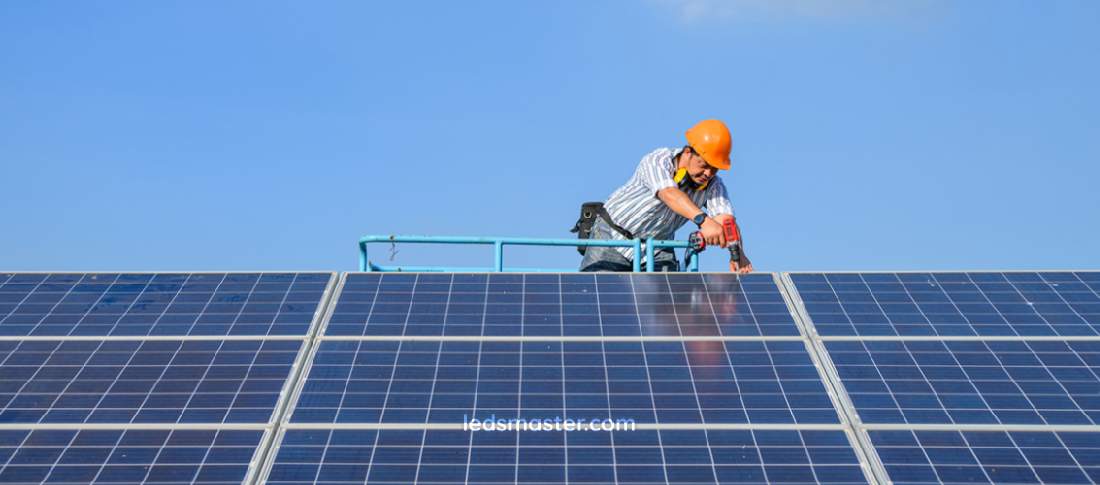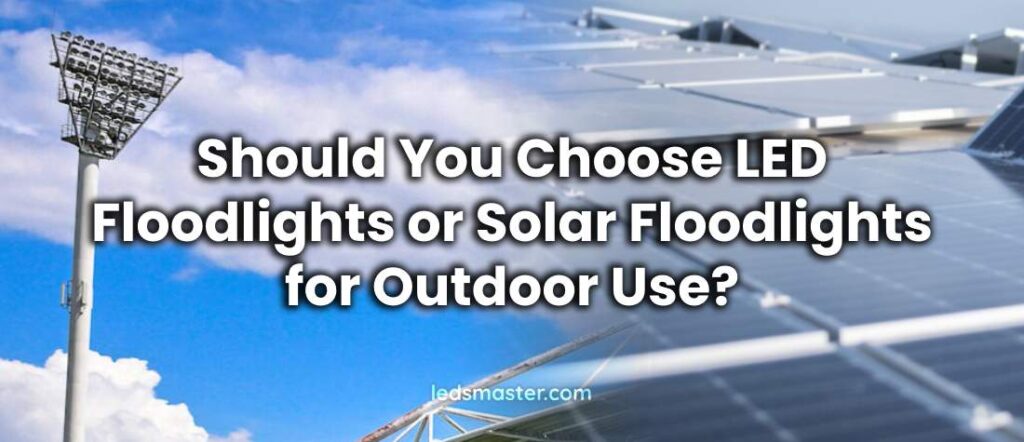Choosing the right outdoor floodlights can significantly impact the effectiveness and efficiency of lighting for various applications. Two prominent options on the market today are LED floodlights and solar floodlights. Each type has its distinct features, advantages, and disadvantages. This article compares LED and solar floodlights in general, examining their performance, costs, sustainability, and suitability for different scenarios.
Table of Contents
TogglePerformance
Brightness and Light Quality
LED floodlights are known for their exceptional brightness and superior light quality. They can produce a high lumen output, ensuring intense and uniform illumination. This high brightness makes LED floodlights suitable for applications requiring significant light coverage, such as sports venues, industrial sites, and large commercial properties. Additionally, LEDs offer a variety of color temperatures, allowing users to choose the most appropriate lighting for their needs, from warm white to cool daylight.
Solar floodlights, while improving in brightness with advancements in technology, generally do not match the intensity of LED floodlights. They provide adequate lighting for residential areas, pathways, and small commercial spaces but may fall short in applications requiring high levels of illumination. The light quality of solar floodlights is sufficient for general visibility and security purposes but may not offer the same range of color temperatures as LED floodlights.

Lifespan and Durability
LED floodlights have a significantly longer lifespan compared to traditional lighting solutions and solar floodlights. They can last up to 50,000 hours or more, making them a cost-effective option in the long run due to reduced replacement and maintenance needs. LED floodlights are also robust and can withstand harsh environmental conditions, including extreme temperatures and moisture.
Solar floodlights typically have a shorter lifespan due to the degradation of solar panels and batteries over time. While the initial investment might be lower, the need to replace batteries every few years can add to the long-term costs. However, advancements in solar technology are gradually improving the durability and lifespan of these lights.
Cost
Initial Investment
The initial cost of LED floodlights is generally higher than that of solar floodlights. This higher upfront investment can be a barrier for some users, particularly those on a tight budget. However, the higher cost is often justified by the longer lifespan and superior performance of LED floodlights.
Solar floodlights usually have a lower initial cost, making them an attractive option for residential users and community projects. Their affordability, coupled with the ease of installation, makes them a popular choice for those looking to minimize upfront expenses.

Operational Costs
One of the most significant advantages of solar floodlights is their low operational cost. Since they rely on free solar energy, there are no ongoing electricity expenses. This cost-effectiveness is particularly beneficial for areas with high electricity rates or for users aiming to reduce their energy bills.
LED floodlights, while more expensive initially, are highly energy-efficient. They consume significantly less power than traditional lighting solutions, resulting in lower electricity bills. Over time, the energy savings can offset the higher initial investment, making LED floodlights a cost-effective option in the long run.
Sustainability
Environmental Impact
Solar floodlights are inherently eco-friendly, as they harness energy from the sun, a renewable resource. They produce no greenhouse gas emissions during operation, making them a sustainable choice for environmentally conscious users. Additionally, solar floodlights reduce reliance on fossil fuels and decrease the carbon footprint associated with electricity generation.
LED floodlights, though not as environmentally benign as solar floodlights, are still a greener alternative to traditional lighting solutions. They consume less power and have a longer lifespan, reducing the frequency of replacements and the associated waste. Moreover, many LED products are designed with recyclable materials, further contributing to their environmental benefits.
Suitability for Different Scenarios
Residential Use
For residential areas, solar floodlights are often the preferred choice due to their ease of installation, low operational costs, and sustainability. They are ideal for gardens, driveways, pathways, and security lighting. The independence from the power grid makes them suitable for remote locations and areas with unreliable electricity supply.
LED floodlights can also be used in residential settings, particularly where higher brightness and more consistent lighting are required. They are suitable for larger properties, security lighting, and outdoor recreational areas. The ability to integrate with smart home systems adds to their appeal for tech-savvy homeowners.
Commercial and Industrial Applications
In commercial and industrial settings, where high brightness, reliability, and durability are paramount, LED floodlights are the better choice. They provide the intense and uniform illumination necessary for safety, productivity, and aesthetic purposes. Their longer lifespan and lower maintenance requirements make them a cost-effective solution for large-scale applications.
Solar floodlights can be used in commercial and industrial settings, particularly for supplemental lighting, landscape illumination, and areas with limited access to electricity. They are also suitable for businesses aiming to enhance their sustainability profile and reduce energy costs. However, their lower brightness and dependence on sunlight may limit their use in certain scenarios.
Sports Venues
Sports venues require high levels of illumination to ensure players’ and spectators’ safety and enjoyment. LED floodlights are the preferred option for these applications due to their superior brightness, uniform light distribution, and ability to eliminate glare. The integration of smart lighting controls allows for the customization of lighting levels based on the specific requirements of different sports and events.
Solar floodlights are generally not suitable for sports venues due to their lower brightness and reliance on sunlight. However, they can be used for auxiliary lighting in parking areas, pathways, and other non-critical spaces around the venue.
Installation and Maintenance
Professional Installation and Minimal Maintenance
LED floodlights typically require professional installation, especially for larger and more complex setups. The installation process involves wiring the lights to the electrical grid, which can add to the initial costs. Professional installation ensures that the lighting system is set up correctly and safely, reducing the risk of electrical hazards.
Maintenance for LED floodlights is minimal due to their long lifespan and durability. Once installed, they require little attention apart from occasional cleaning to remove dust and debris that could affect light output. The robust design of LED floodlights means they can withstand harsh environmental conditions, further reducing the need for frequent maintenance. However, in the rare case of malfunction, professional repair services may be needed.
Easy Installation and Regular Cleaning
Solar floodlights are generally easier to install compared to their LED counterparts. They do not require wiring to the power grid, making them a more straightforward, DIY-friendly option. Installation usually involves mounting the lights and positioning the solar panels to maximize sun exposure. This ease of installation can save time and reduce initial setup costs.
Maintenance for solar floodlights, while still relatively low, is slightly more involved than for LED floodlights. Regular maintenance includes cleaning the solar panels to ensure they operate efficiently and replacing batteries every few years as their capacity diminishes. The need for periodic battery replacement can add to the long-term maintenance costs, but advancements in solar technology are gradually extending battery life and reducing this burden.
Flexibility and Mobility
Low in Flexibility and Mobility
LED floodlights are typically designed as more permanent fixtures due to their wiring requirements. Once installed, they are generally fixed in place, which can be a limitation if lighting needs change. This lack of mobility makes them well-suited for stable, long-term lighting solutions where flexibility is not a primary concern, such as in sports venues, industrial sites, and large commercial properties.
However, some LED floodlights offer features such as adjustable mounting brackets and pivoting heads, providing some degree of flexibility in directing the light. Despite this, the overall mobility remains limited compared to solar floodlights due to the need for a wired power source.
High in Flexibility and Mobility
One of the significant advantages of solar floodlights is their flexibility and mobility. Since they do not require a connection to the electrical grid, they can be easily relocated as lighting needs change. This makes them an ideal solution for temporary lighting setups, events, and areas where lighting requirements may shift over time.
Solar floodlights are also suitable for remote and off-grid locations where running electrical wiring is impractical or too costly. Their portability allows users to experiment with different lighting positions and angles to achieve the desired illumination effect. This flexibility, combined with the ease of installation, makes solar floodlights a versatile option for a wide range of applications, from residential gardens to temporary commercial installations.
Conclusion
Selecting the right outdoor floodlights, whether LED or solar, depends on various factors including performance, cost, sustainability, and application needs. LED floodlights excel in brightness and durability, making them ideal for high-demand commercial and industrial settings. Solar floodlights, on the other hand, offer ease of installation, low operational costs, and environmental benefits, making them suitable for residential areas and supplemental commercial lighting. Both options have unique advantages and choosing the best one depends on the specific requirements of the lighting project.

